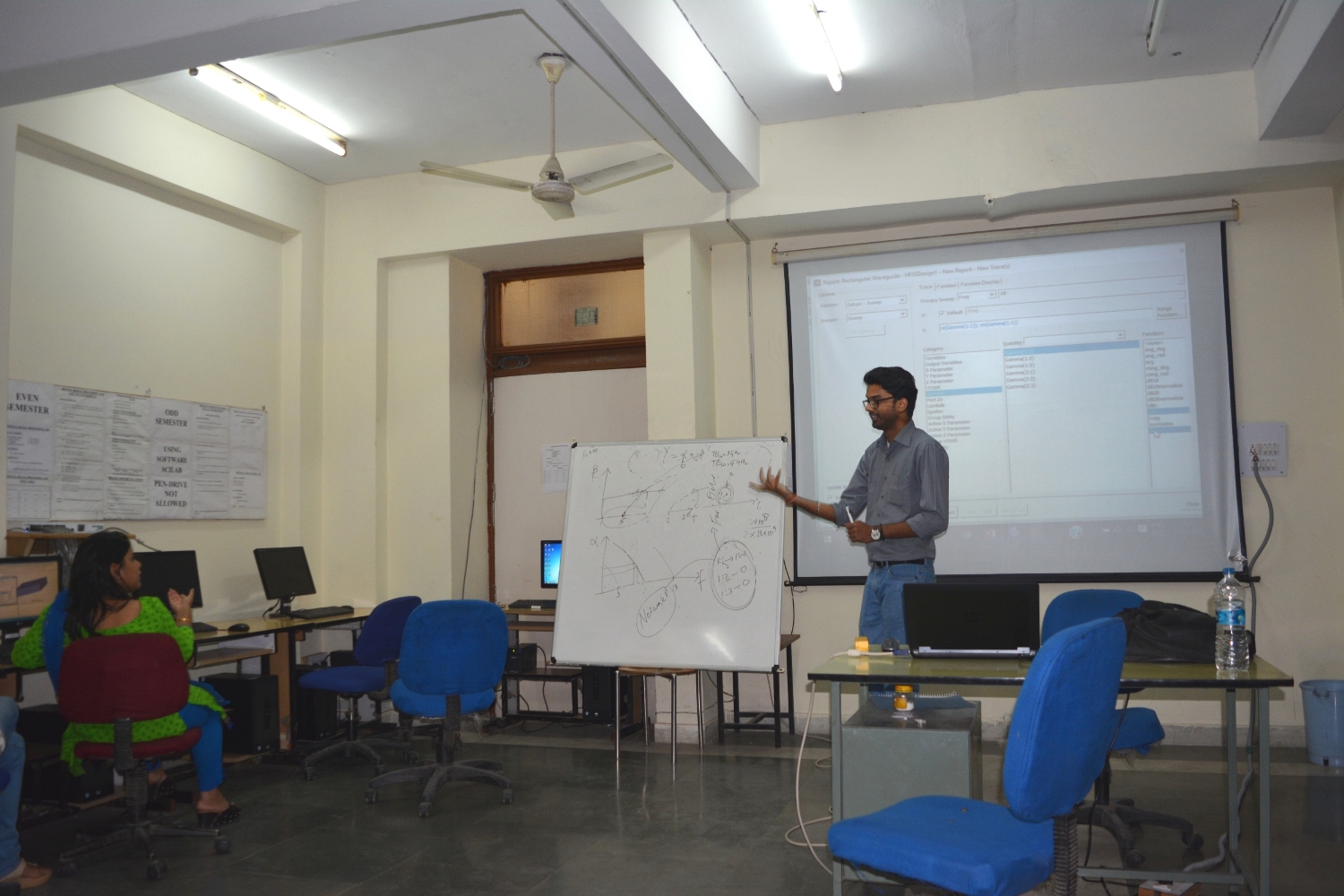Training-Workshop on HFSS software
The recent availability of Electromagnetic Transient Programs with graphical front ends now makes it possible to put together models for circuits and systems in a manner similar to the connection of components in a laboratory, In the past, the non-graphical EM Programs required considerable expertise in their use and thus distracted the students into the details of simulation. The introduction of a simulation based laboratory into undergraduate Electromagnetic engineering education programs is very much required, based on the university program/curriculum. The philosophy behind the design of suitable high frequency device is required for day to day knowledge of next generation students.
EM simulation software features a modern design, simulation and analysis environment, high capacity simulation technologies and integration with the industry’s leading RF and microwave circuit design environment.
Currently, around 40-50% practical oriented syllabus of our university's curriculum are reflective of the current trend to use simulation as a teaching tool for evaluating and training our students. Our aim is to perform a retrospective review of the current literature, studying simulation use in EM theory for the students.
With this consideration in mind, two day training-cum-workshop was organized in the Department of Electronics and communication Engineering, Maharaja Agrasen Institute of Technology, New Delhi on 26-27 July 2017. The workshop was conducted by Mr. Bishu, Mind Box, Noida. All the faculty members associated with the RF & Microwave field from electronics and communication engineering department attended the workshop.
During the workshop, various concepts of RF including computational techniques for antennas, electromagnetism, concept of HFSS, meshing techniques, feeding techniques, rectangular waveguides, design and analysis of patch, design and analysis of radar, etc were discussed. Trainer engaged the participants in working and designing different kinds of antennas and demonstrated on how to position the antenna in the boxes. The experts also exhaustively touched upon the subjects of EMC and EMI and elaborated on the process of testing the equipment that emits radiations and also measure the extent and intensity of radiation emissions.
On the second day the workshop came to a conclusion, with all the participants getting familiar to the HFSS tool and designing antennas and waveguides for a specific purpose. The workshop proved to be a wonderful platform for participants where they obtained ample exposure and familiarity to the designing.








